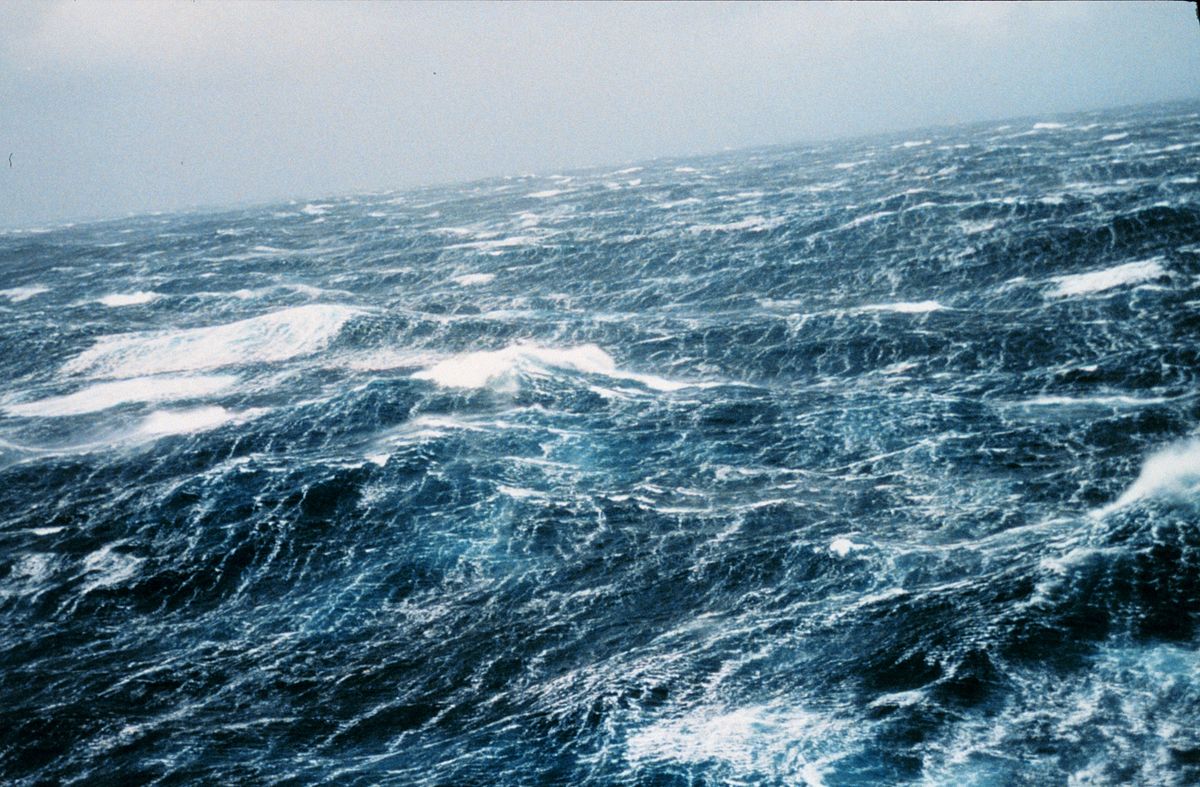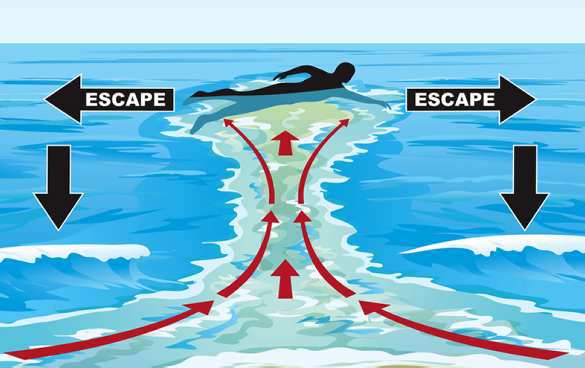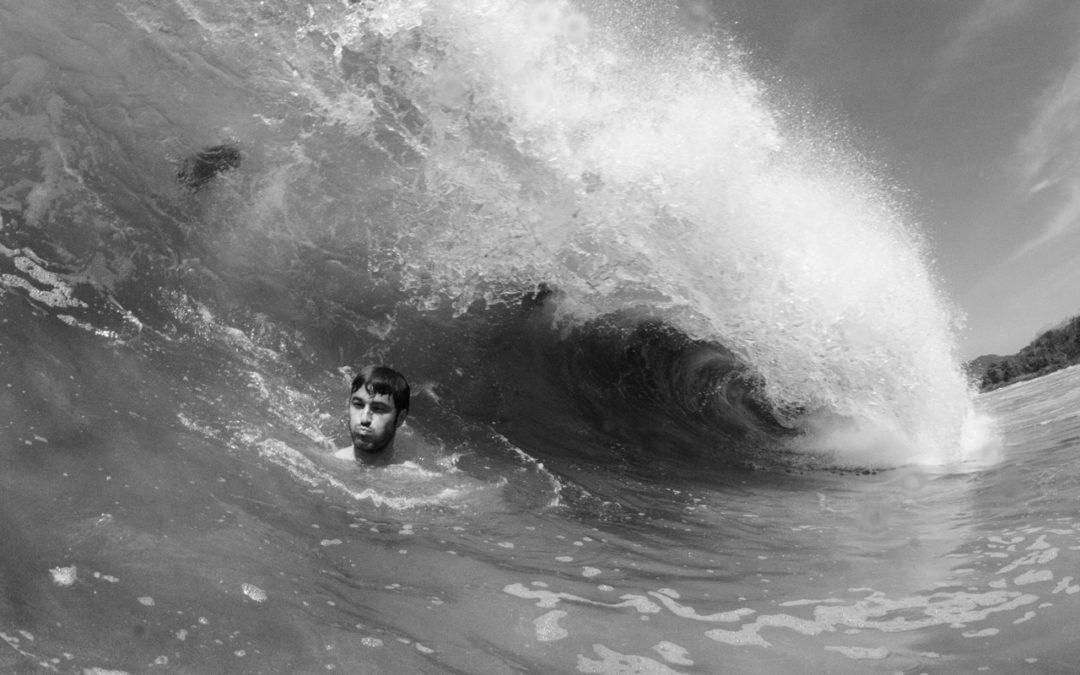When you prepare to surf, the ocean becomes your playground. Understanding the beach conditions is not only key to improving your technique but also to ensuring your safety in the water. At Peña Txuri Surf Eskola, we know that the proper interpretation of the sea can make all the difference in your surfing experience. Here, we explain the most important aspects you need to know before hitting the waves.
Índice
How to Interpret Waves for Surfing?
Waves are the soul of surfing, but not all waves are the same. As a beginner, it’s essential to understand the size, shape, and frequency of waves. Facing waves that are too large without the proper preparation can be risky. Therefore, always observe how the waves behave before getting in the water. Watch other surfers to get a visual reference of the size and power of the waves. Additionally, use the right equipment based on the wave size: bigger boards for smaller waves and shorter, more maneuverable boards for larger and faster waves.
Wave Size
The size of the waves directly impacts your surfing experience. Larger waves require more skill and strength to surf, while smaller waves are ideal for practicing maneuvers and improving your technique without as much risk. Make sure to know your limits and don’t tackle waves that are too big for your level of experience.
Why is Wind Important in Surfing?
The wind plays a crucial role in wave formation and quality. The direction and intensity of the wind can change quickly, affecting the sea surface and therefore the waves. For example, an offshore wind (blowing from land towards the sea) usually creates cleaner, more defined waves, while an onshore wind (blowing from the sea towards the land) can make the waves messier and harder to surf. Learning to read wind forecast maps and understanding the cardinal points will help you choose the best time and place to surf.
How Does Wind Affect Wave Quality?
Offshore wind tends to make waves smoother and longer-lasting, ideal for surfers seeking well-formed, tubular waves. In contrast, onshore wind can mess up the waves, creating more challenging and less predictable conditions. Understanding how each type of wind affects the waves will allow you to better plan your surfing sessions.

What Impact Does the Seafloor Have on Waves?
The type of seafloor is another important factor to consider. Different seafloors —such as sand, rock, flat reef, or coral— affect the way waves break. For beginners, sandy beaches are generally safer, as the waves tend to be gentler and less dangerous in case of falls. However, more advanced surfers may seek rock or coral reefs that produce more powerful, tubular waves. Knowing the type of seafloor at the beach where you plan to surf will help you anticipate wave behavior and prepare better for each session.
How Do Different Seafloors Influence Surfing?
Sandy seafloors tend to create gentler, more manageable waves, perfect for learning and practicing without too much risk. On the other hand, rock or coral seafloors can produce faster, more dangerous waves, ideal for experienced surfers looking for a greater challenge. Choosing the right seafloor for your level can improve your surfing experience and reduce unnecessary risks.
How Do Tides Affect Surfing?
Tides, influenced by the moon, alter the water’s depth and directly affect the quality and type of waves that form. Low tides can reveal rocks and other hidden hazards, while high tides can make the waves smoother and less powerful. Knowing the tide schedules is essential for planning your surfing session. Make sure to understand how the tides affect the specific break where you plan to surf; some waves only work well at low tide, while others are better at high tide.

Why Should You Pay Attention to the Tides?
Observing the tides helps you avoid unpleasant surprises, such as exposed rocks or strong currents. Additionally, some waves are at their best during a specific tide, so planning your surf according to the tides can significantly improve your experience. Make sure to know the ideal tide for your favorite spot.
Understanding Beach Conditions and Currents
Ocean currents are movements of water that can significantly affect your surfing experience. These currents, influenced by wind, tide, and the seafloor, can help you move along the beach or pull you out to sea. It’s vital to learn to recognize rip currents and other dangerous currents to avoid risky situations. Always observe the water before entering and look for areas where the water appears darker or more turbulent, as these are signs of strong currents. Talking to local surfers and getting proper training will help you better understand currents and how to use them to your advantage.
What Are Rip Currents and How Can They Affect You?
Rip currents are strong water currents that flow from the shore out to sea and can be extremely dangerous if you don’t know how to handle them. These currents can quickly pull surfers far from the coast, so it’s crucial to know how to identify and avoid these areas. Never fight against a rip current; swim parallel to the shore until you’re out of the current.

What is the Break Zone and How Does it Affect Surfers?
The break zone is the area where waves finally break, transforming from smooth swells into surfable walls of water. The depth of the seafloor in this zone determines whether a wave turns into a perfect tube or simply dissipates. To maximize your time in the water and avoid surprises, it’s essential to understand how the break zone changes with the tide, currents, and wind. Knowing these variables will help you predict the type of wave you’ll encounter and position yourself correctly to catch it.
Best Beach Conditions and Break Zone
The best break zone for surfing depends on the current sea conditions and the seafloor. Watch how the waves break at different points along the beach to identify the ideal spot to enter the water. Remember that the best break zone can change with the tide and wind conditions, so stay flexible and alert.
The Importance of Learning from Professionals to Interpret Beach Conditions
Understanding the beach conditions is crucial for surfing safely and effectively. At Peña Txuri Surf Eskola, we not only teach our students how to surf but also provide them with the knowledge needed to interpret the sea. Knowing how currents work, how the break zone changes with the tide, and how wind affects the waves can be the difference between a safe and dangerous surfing session. Proper training with professional instructors prepares you to make informed decisions and enjoy your time in the water to the fullest.
Learn to Surf with Peña Txuri Surf Eskola
At Peña Txuri Surf Eskola, we offer comprehensive training that covers much more than basic surfing techniques. Our experienced instructors will teach you how to read the sea, understand currents, and choose the best conditions for your skill level. We are committed to your safety and to providing you with

